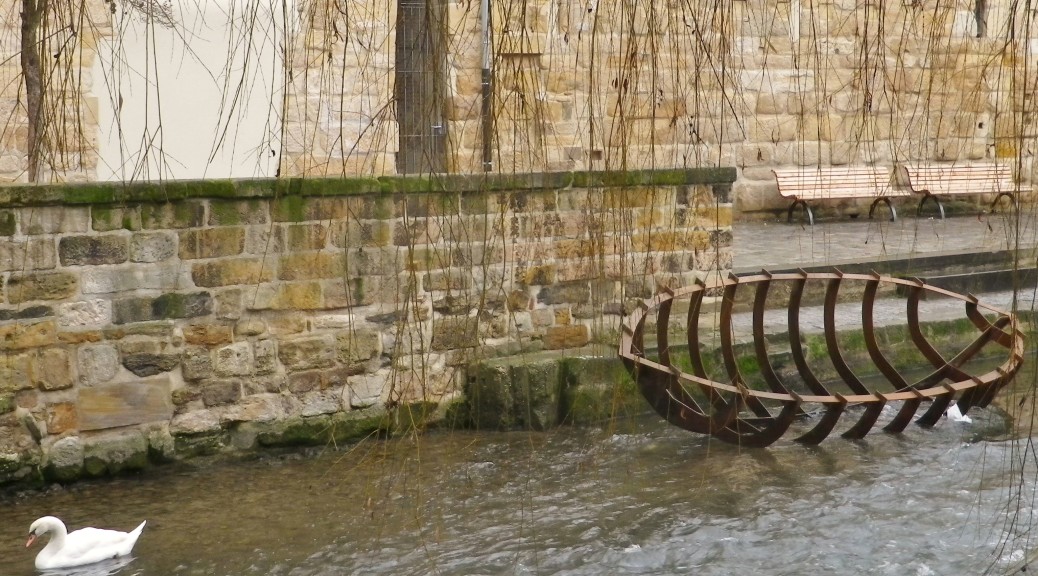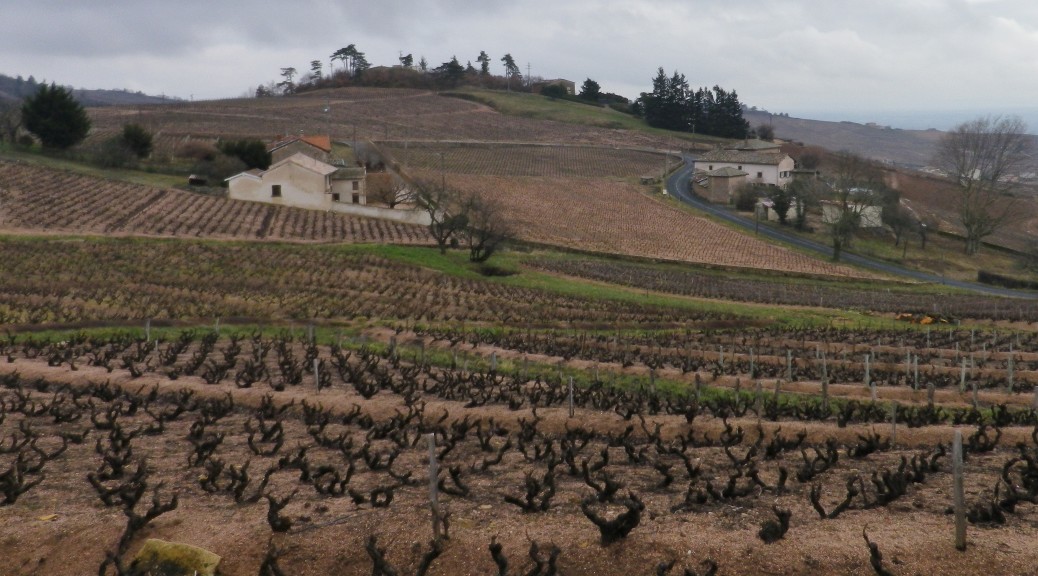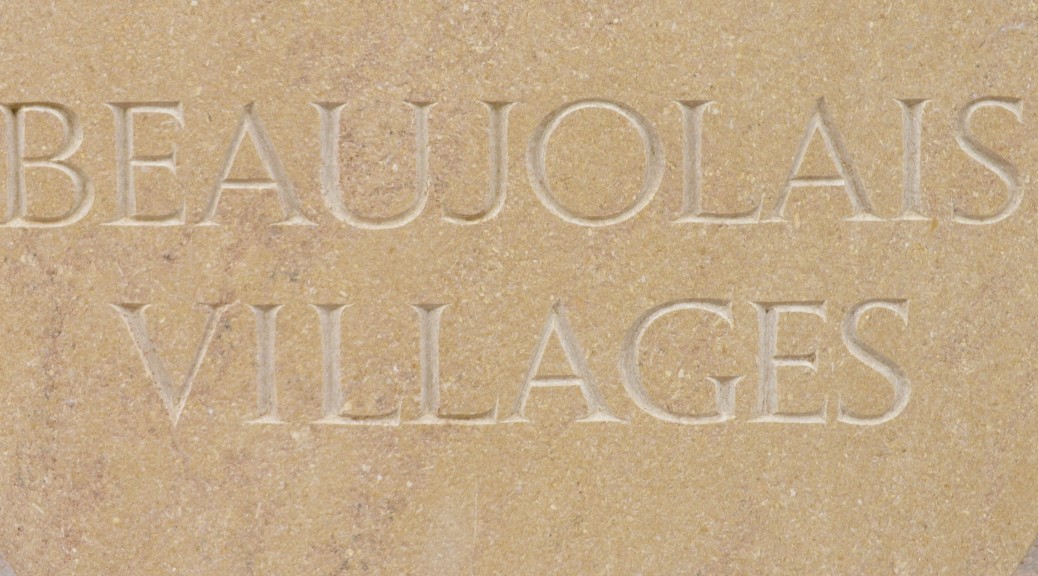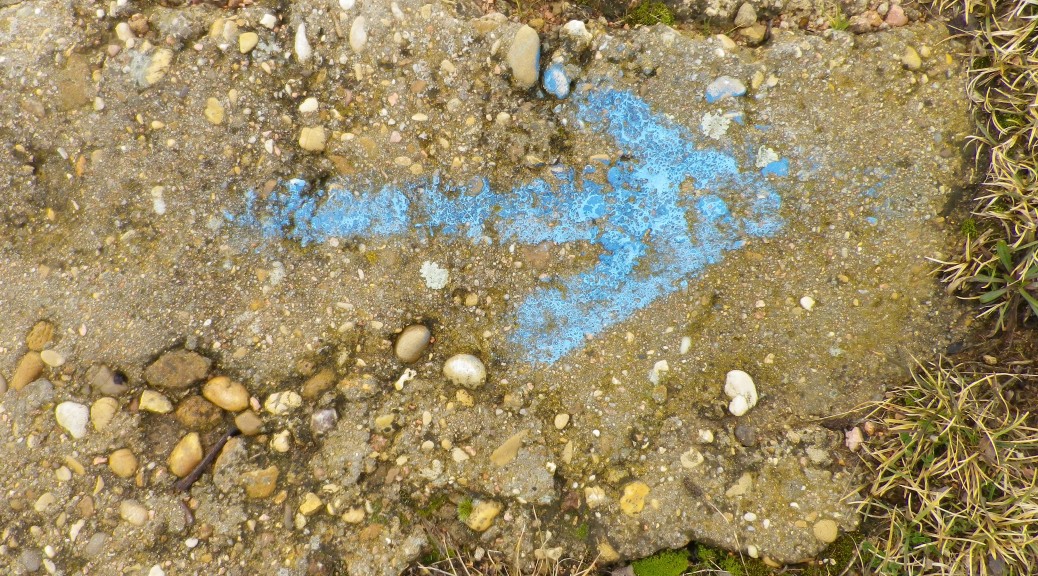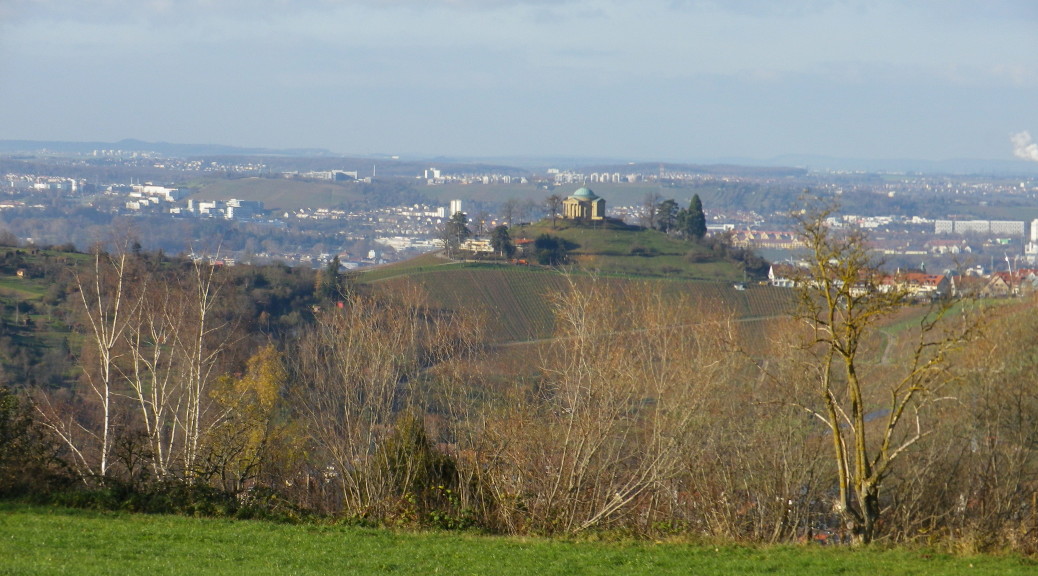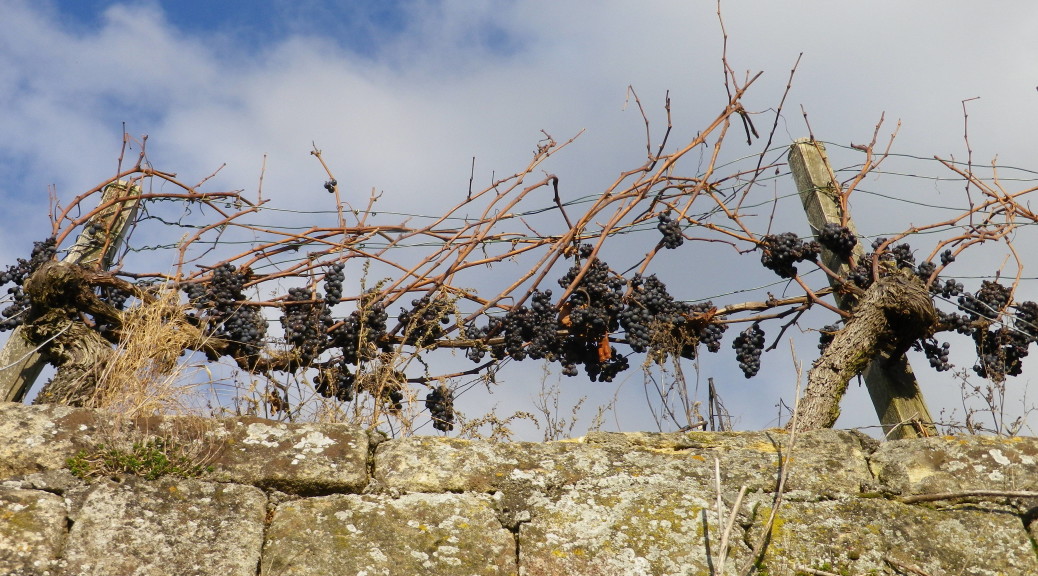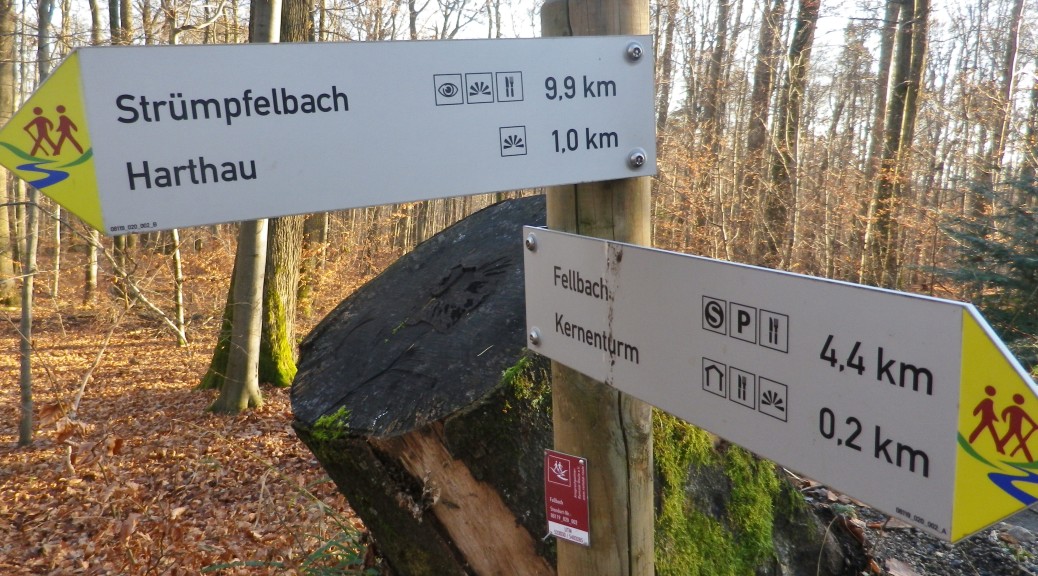Monthly Archives: February 2016
A Flowery Winter Hike
Fleurie means flowery, which this village undoubtedly is in spring and summer. But on my winter weekend break it was wet and windy. The weather only worsened as time went on. The rain turned into downpours. But after almost two days of rain, the forecasts called for a two to three-hour break in the rains. I decided to embark on one of Fleurie’s four circuit trails before leaving the area. Four great trails, seemingly designed for someone like me: wanting to hike, but with some time constraints. A great and convenient feature of the Entre Vignes et Bois (Between Vines and Woods) series of trails in Fleurie, is this: They are circuits that radiate out from the village in increasingly wider circles. Therefore, hikers can choose between one or another depending on time, capabilities, or in this case, weather.
Optimistically choosing the 12 kilometer (red) circuit, I set off from the Place de l’Eglise. But within 10 minutes, rain began to fall. A quick look at the sky confirmed that thick black clouds were rolling in faster than anticipated. So I switched to the four kilometer circuit instead. It was an easy decision to make on the spot. Should the downpours suddenly return, the map showed that this circuit also allowed for a couple of possible shortcuts, on tarmac, no less. This kind of flexibility created by interconnectivity is another great feature of the Entre Vignes et Bois trail series.
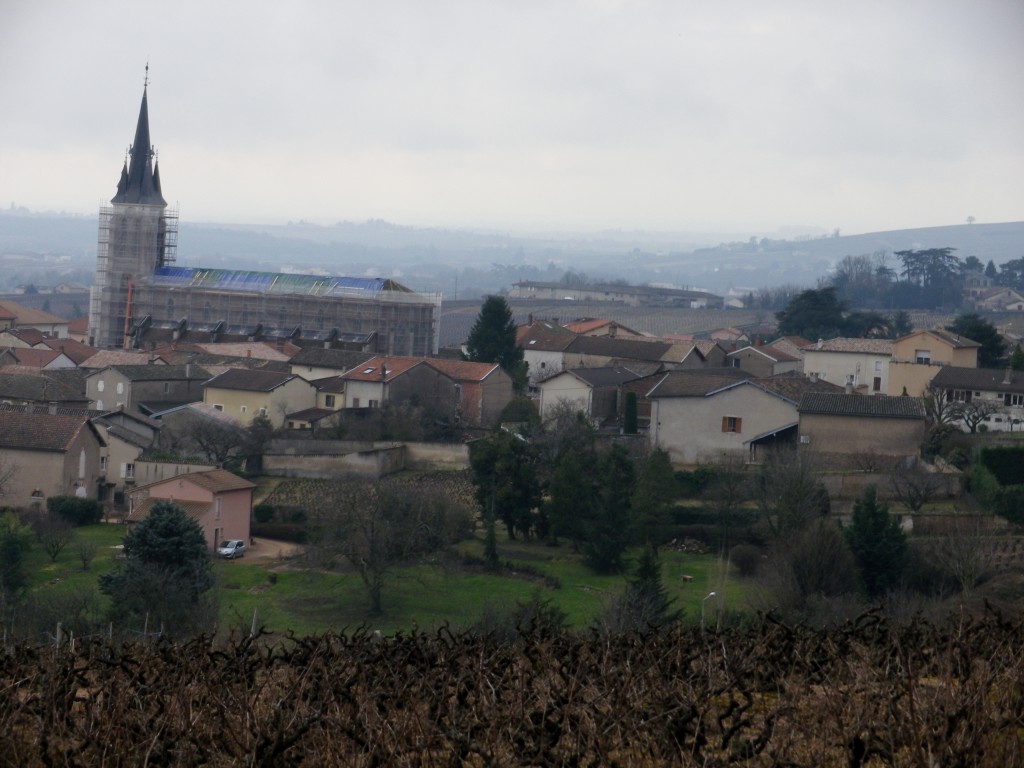
Wine Notes: Beaujolais
What I Learned
Beaujolais falls within the wine region of Burgundy, although it is outside the political boundaries of the region. It has three different quality levels: a simple Beaujolais produced in the southern-most reaches of this area; a Beaujolais-Village appellation; and in the northern part of this wine region, ten villages with their own appellations due to their special crus. It is a singular geological area of often steep hills and hidden valleys. Schist and granitic soils in the Beaujolais give a distinctive minerality to the wines. The best of these wines, the ten villages/areas of appellation (Brouilly, Chenas, Cote de Brouilly, Chiroubles, Fleurie, Julienas, Morgon, Moulin a Vent, Regnie, Saint-Amour) offer good value for quality wines. Overall, there are 12 different appellations within the Beaujolais region to look for on a bottle label.
Entre Vignes et Bois: Trail in a Nutshell
Trail Name: Fleurie – Entre Vignes et Bois
Trail Type(s): A series of four circuits, short, medium and long distances, circling out from Fleurie (in the Beaujolais district); trail surfaces partly paved, partly hard-packed, otherwise grass or earthen surfaces (sandy or compacted); Route(s) mostly marked.
Length(s):
Total: 4, 12, 16 and 25 kilometers/2.5, 7.5, 10, and 15.5 miles respectively
Convenient to: Lyon, France
Marking: Colored rectangles (blue, for the four kilometer circuit; red for the 12 kilometer circuit, green for the 16 kilometer circuit, and yellow for the 25 kilometer circuit.), some with arrow to indicate direction; and sometimes a square placard with the words “Entre Vignes et Bois” and a bunch of grapes and a grape leaf.
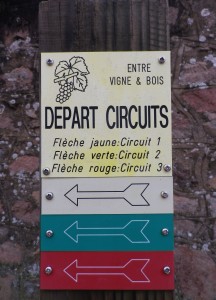
Green Creek and Red Mountain Land
Posts last month (here) detailed the first three stages of my hike through the southern-most portions of the Wuerttembergische Weinwanderweg (W4, for short), using only public transportation from Stuttgart. I ended the first half of my intended stages at the small town of Remshalden. This post (and the Nutshell) covers the remaining stages, passing through the wine growing area of Remstal, all the way to the historic city of Esslingen.
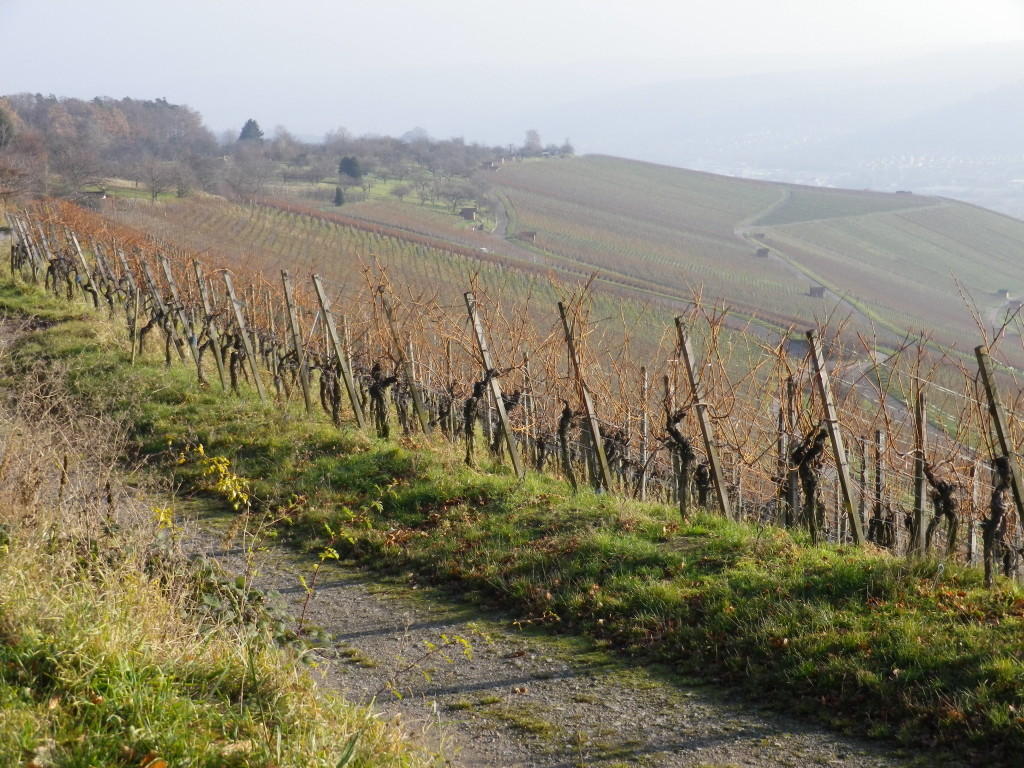
Wine Notes: Wuerttemberg’s Remstal-Stuttgart
What I Learned
Wuerttemberg is a large and diverse wine region. Throughout the region red varietals tend to predominate, especially the Trollinger variety. The part of the trail through greater Stuttgart essentially covered two of Wuerttemberg’s six wine districts. This post includes the Stuttgart and Remstal districts. These are right along the Wuerttembergische Weinwanderweg trail, slightly north and east of Stuttgart, and as far south as Esslingen.
Continue reading Wine Notes: Wuerttemberg’s Remstal-Stuttgart
Wuerttembergischer Weinwanderweg: Trail in a Nutshell
Trail Name: Wuerttembergischer Weinwanderweg
Trail Type: Long distance; often but not always paved, fairly well maintained, but the route itself is not always marked in critical places.
Length:
(Total: 470 kilometers / 292 miles)
Segments Covered in this Post: circa 27 kilometers / 17.5 miles
Convenient to: Stuttgart, Baden-Wuerttemberg, Germany
Marking: Red grape bunch on a white background (on a sign, painted on walls or trees, on stickers adhering to posts)
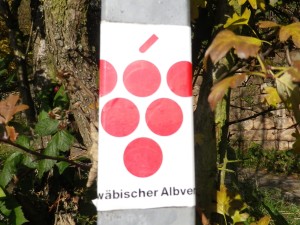
Continue reading Wuerttembergischer Weinwanderweg: Trail in a Nutshell
